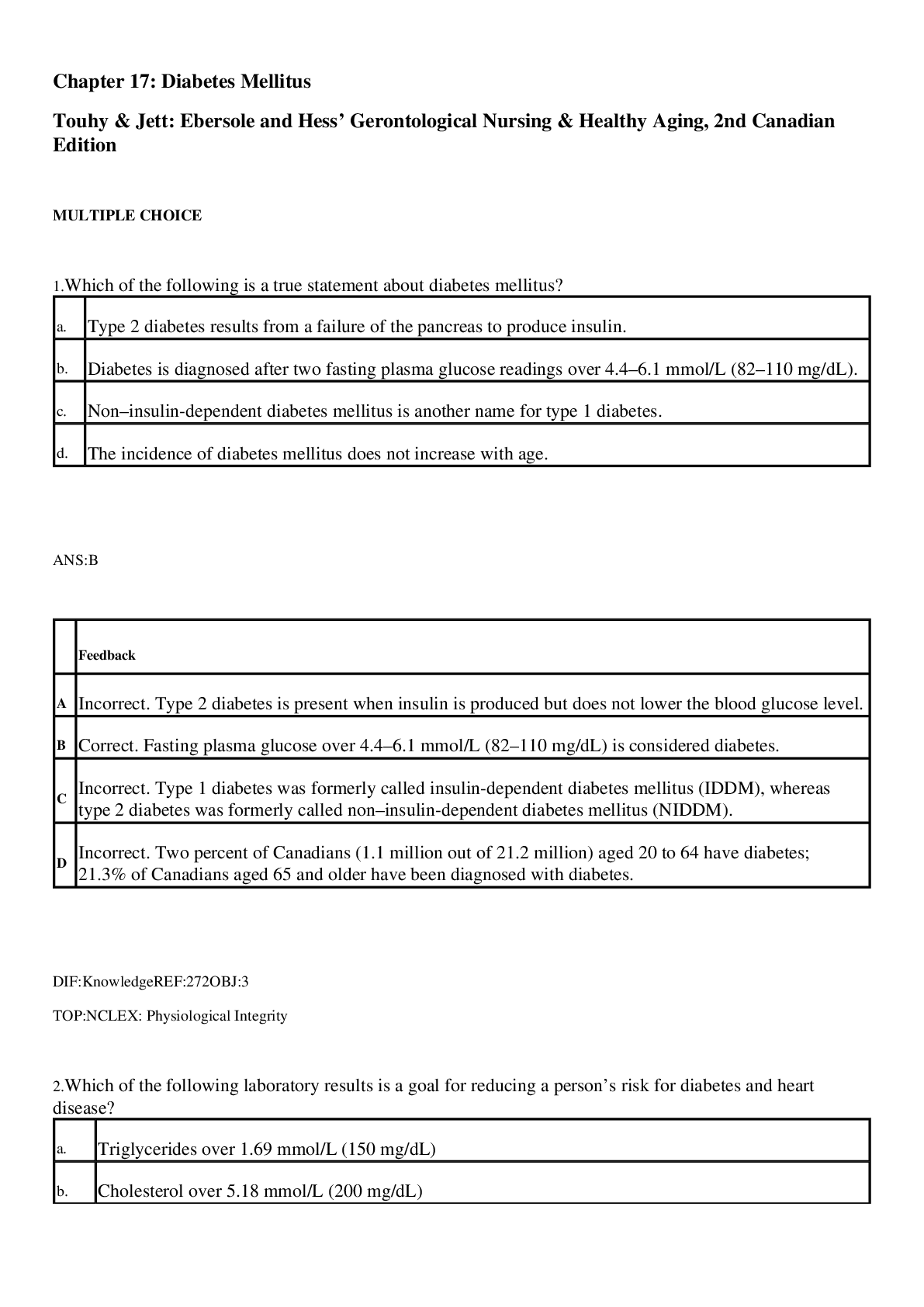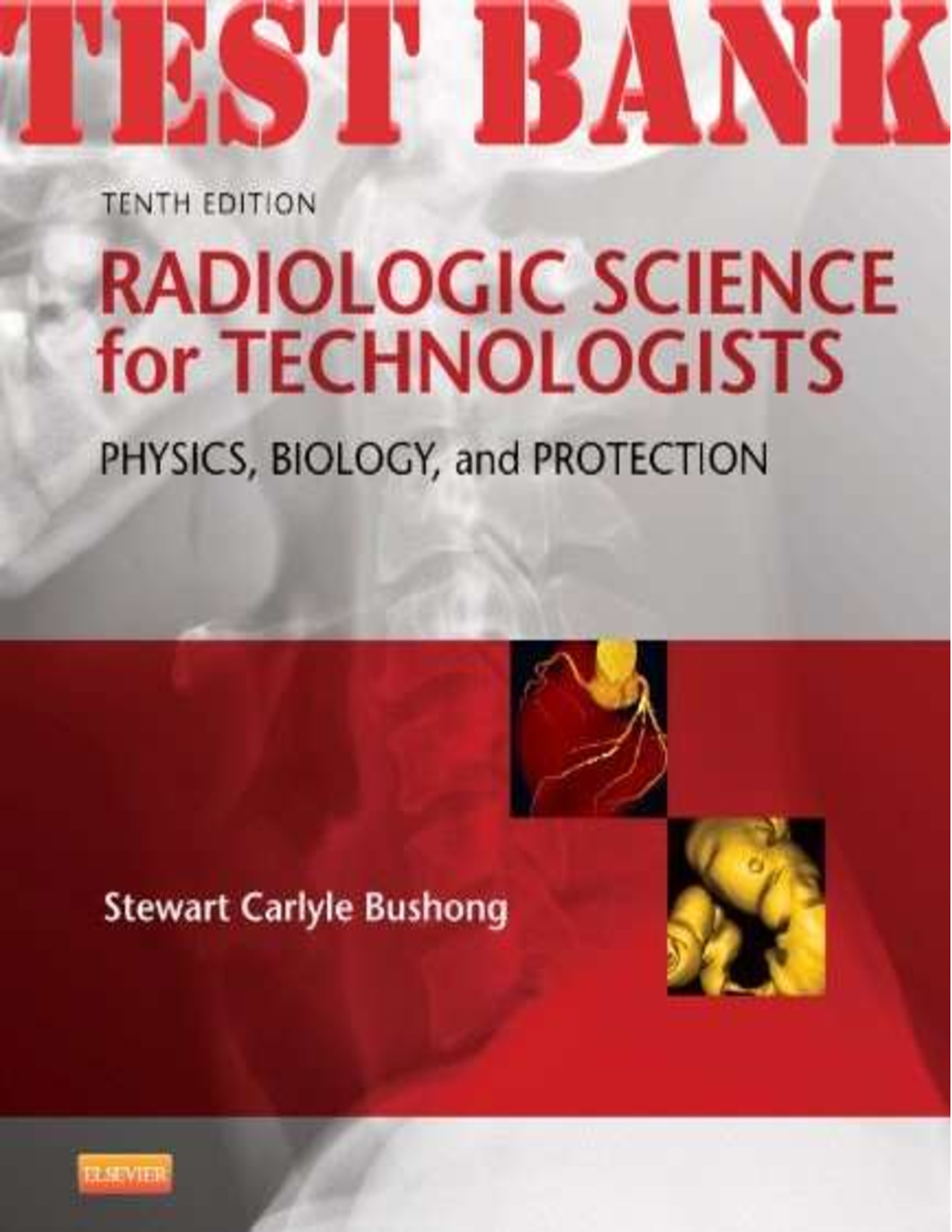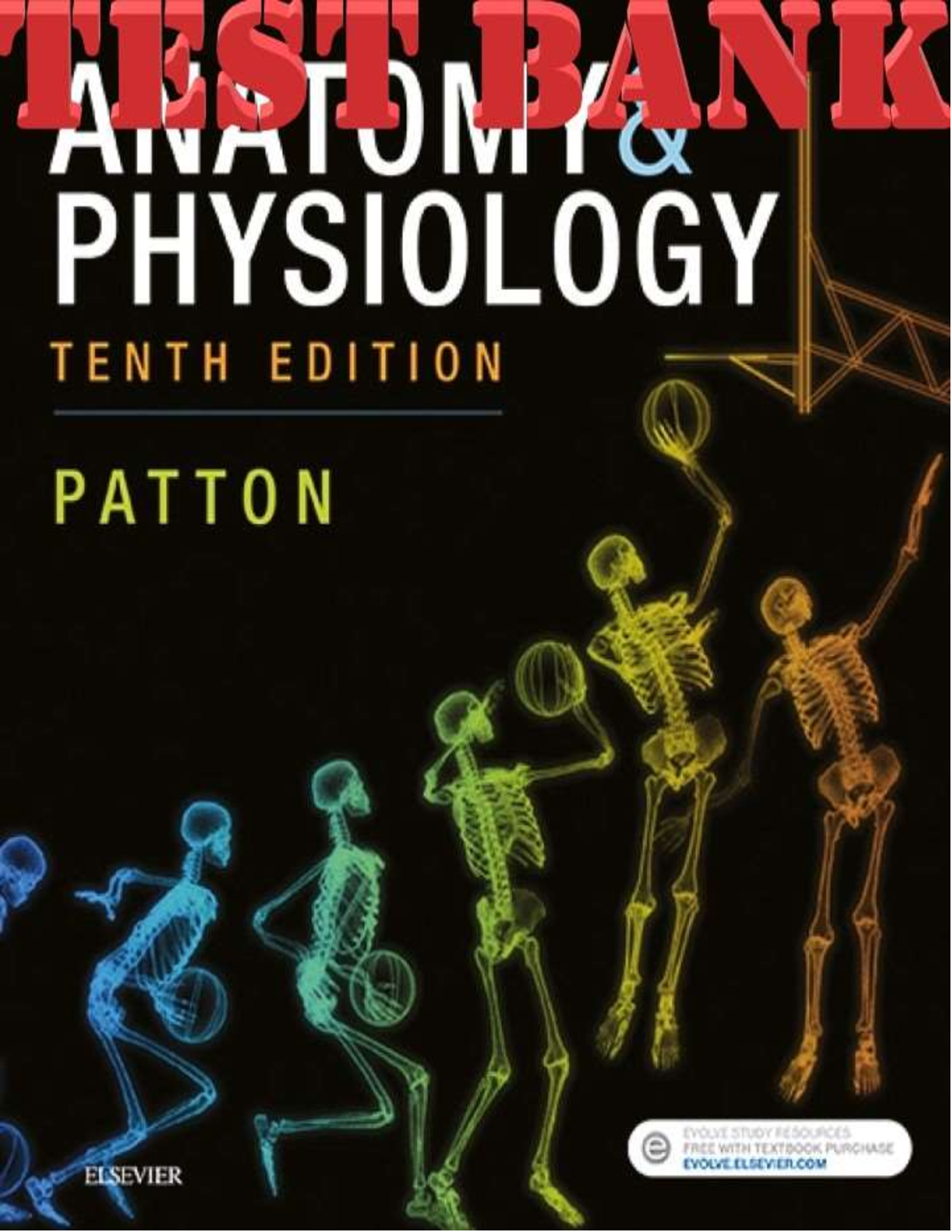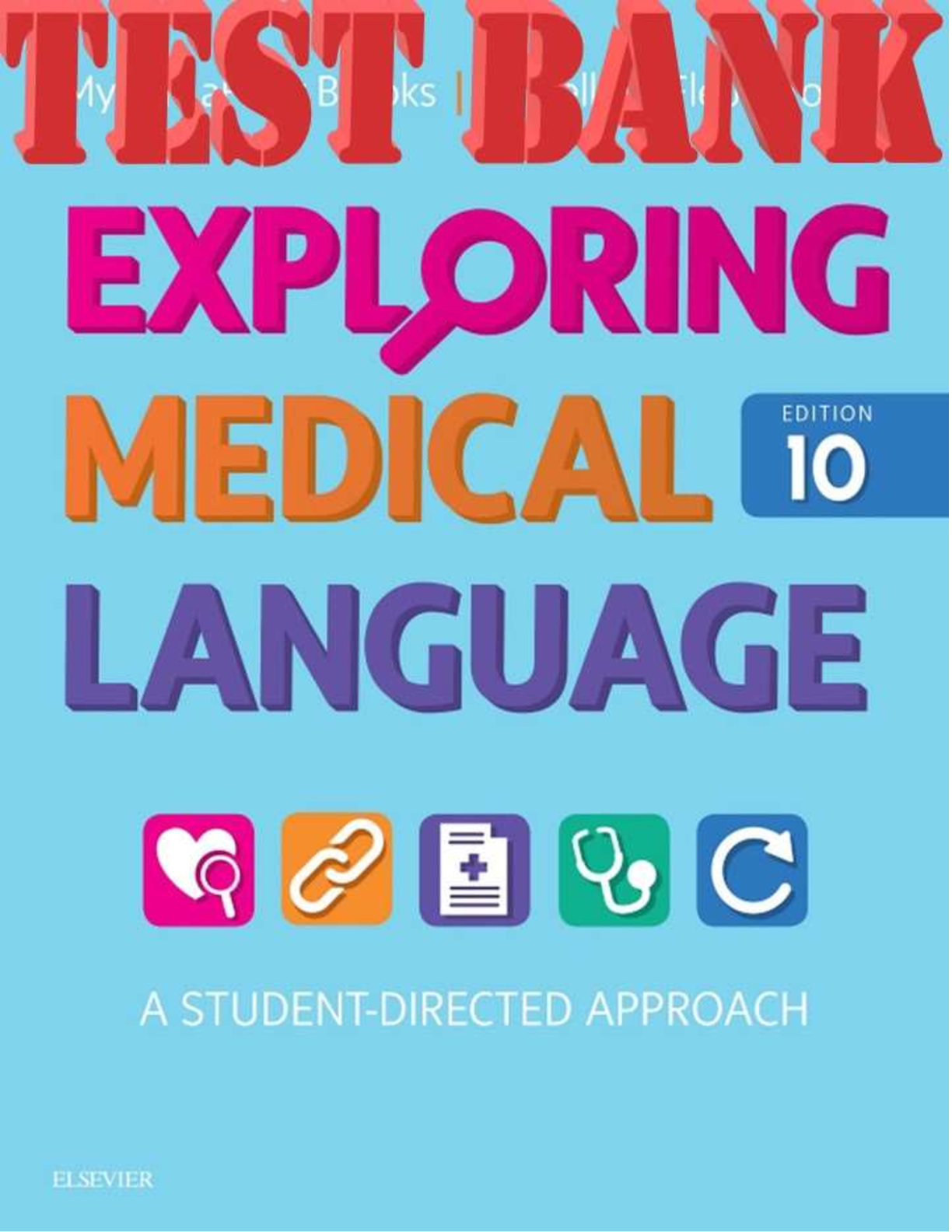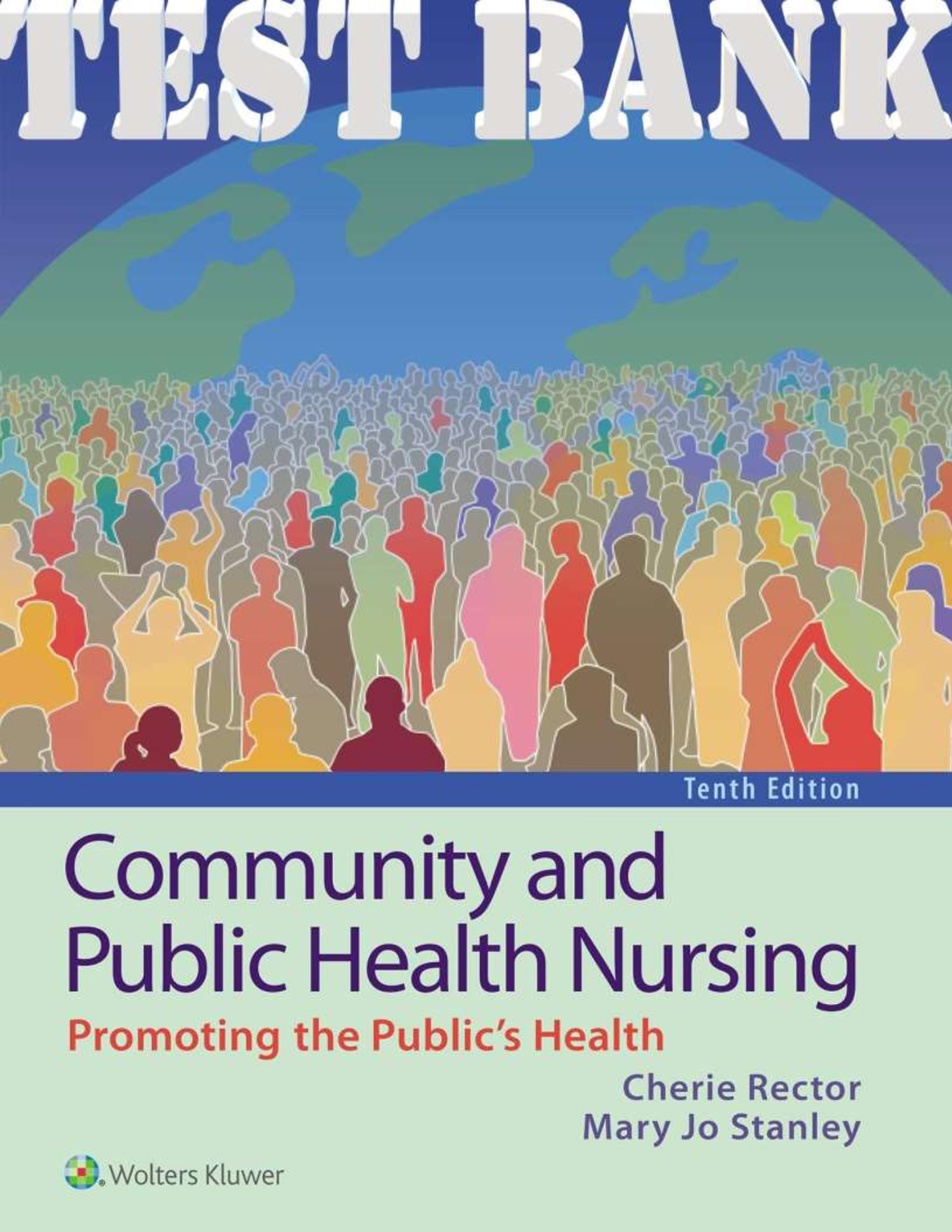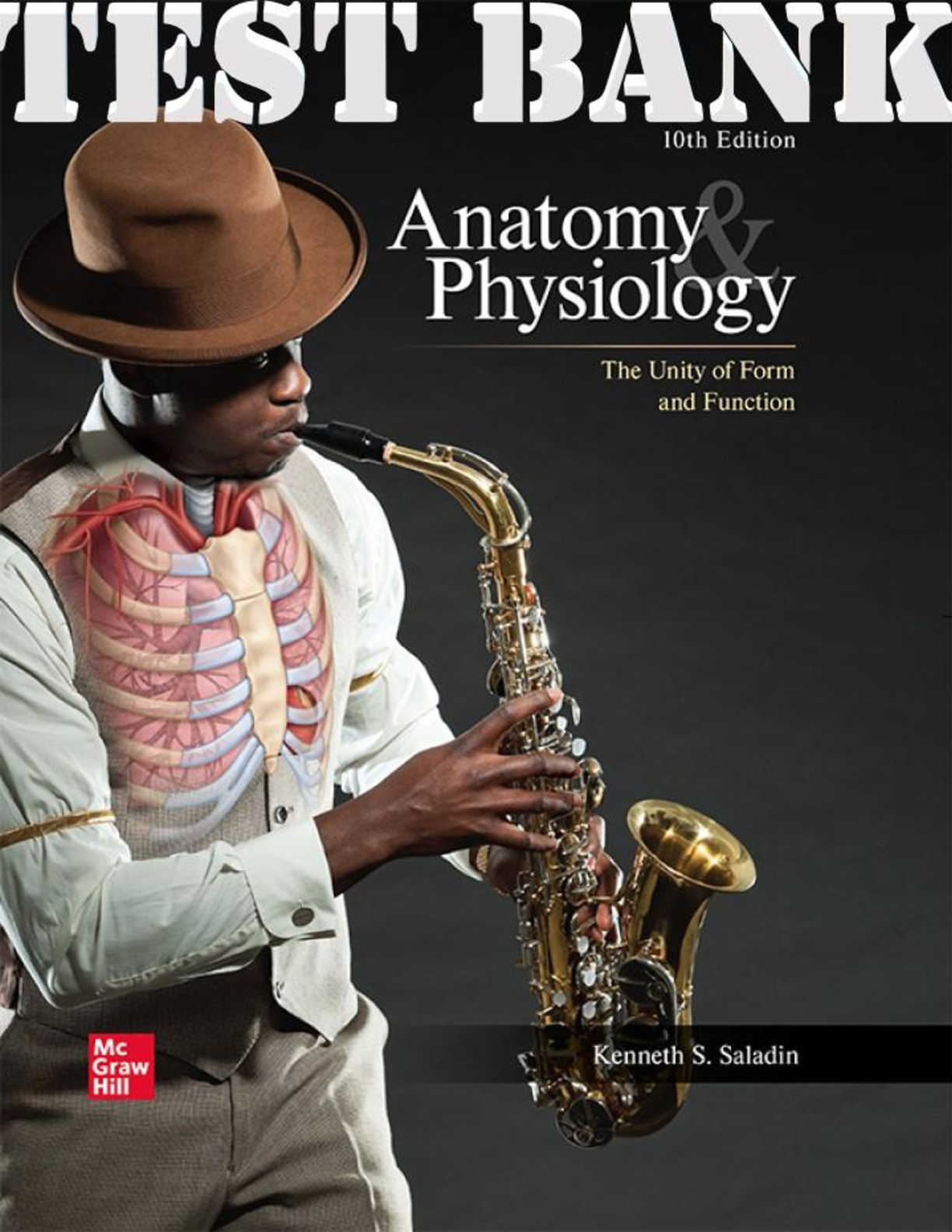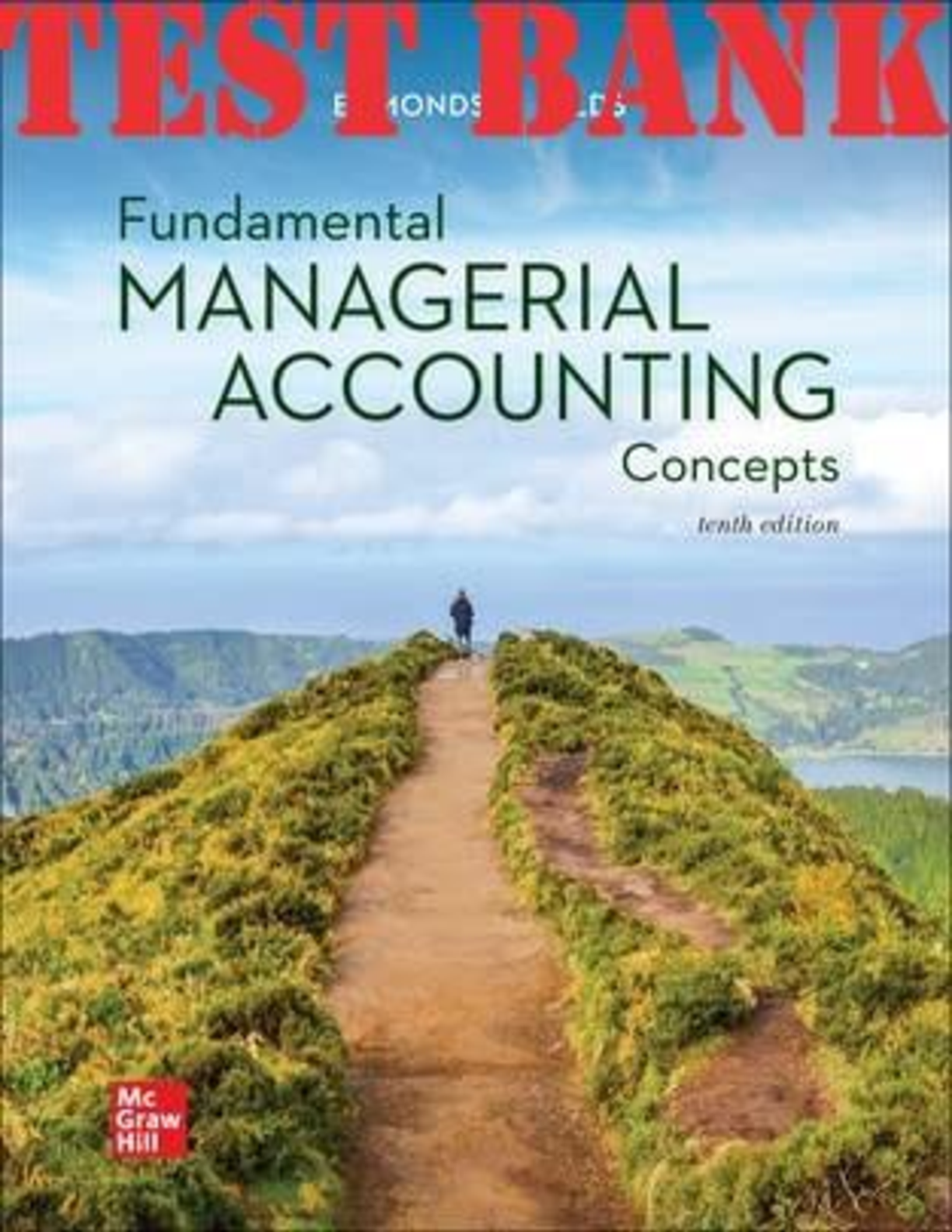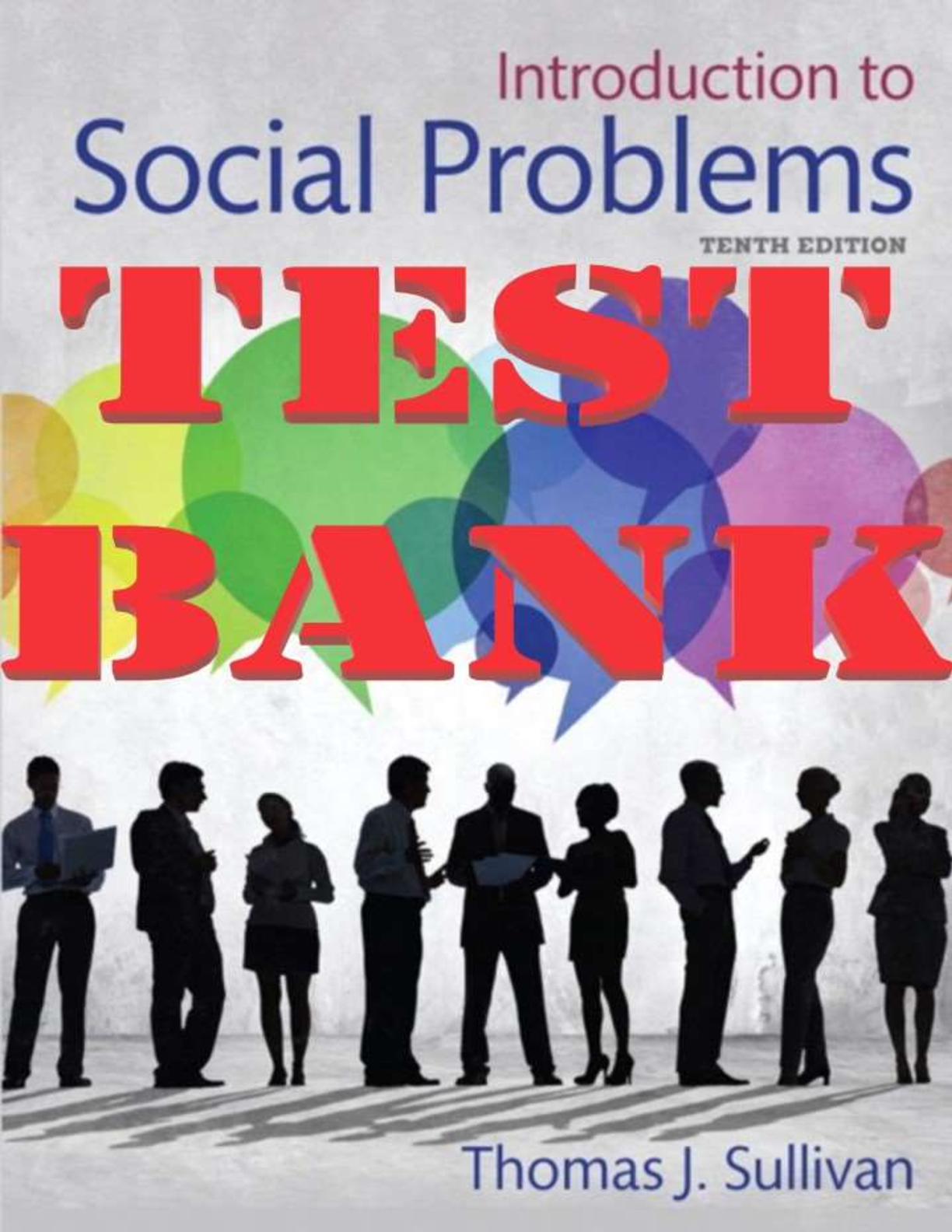*NURSING > TEST BANK > TEST BANK FOR PORTH’S PATHOPHYSIOLOGY 10TH EDITION BY NORRIS CHAPTER 30: Respiratory Tract Infecti (All)
TEST BANK FOR PORTH’S PATHOPHYSIOLOGY 10TH EDITION BY NORRIS CHAPTER 30: Respiratory Tract Infections and Neoplasms
Document Content and Description Below
1. As part of a public health initiative, a nurse is teaching a group of older adults about ways to promote and maintain their health. Recognizing that the common cold is a frequent source of ailment,... the nurse is addressing this health problem. Which of the following teaching points about the common cold is most accurate? A) “You shouldn't be taking antibiotics for a cold until your doctor has confirmed exactly which bug is causing your cold.” B) “It's important to both cover your mouth when you cough or sneeze and encourage others to do so, since most colds are spread by inhaling the germs.” C) “Scientists don't yet know exactly what virus causes the cold, and there is not likely to be a vaccine until this is known.” D) “Use caution when choosing over-the-counter drugs for your cold; most people do best with rest and antifever medications.” Ans: D Feedback: The efficacy of over-the-counter cold remedies is minimal, and all have a risk of unwanted side effects; rest and antipyretics are normally sufficient since cold viruses are normally self-limiting. No cold-causing virus will respond to antibiotics, and most colds are spread by the fingers. There is no one specific virus that causes the common cold, and numerous different viruses cause similar symptoms. 2. Which of the following patients who presented to a walk-in medical clinic is most likely to be diagnosed with a rhinosinusitis rather than a common cold? A) A man complaining of general fatigue, a headache, and facial pain with a temperature of 100.9°F B) A woman presenting with malaise, lethargy, and copious nasal secretions C) A man with a dry, stuffy nasopharynx, a sore throat, and temperature of 98.9°F D) A woman complaining of generalized aches and who has a hoarse voice and reddened, painful upper airways Ans: A Feedback: Fever and facial pain are more commonly associated with rhinosinusitis rather than the common cold. The other noted symptoms are indicative of the common cold rather than rhinosinusitis. 3. A child with rhinosinusitis should be monitored for complications. Which of the following assessment findings would alert the nurse that a complication is developing? A) Purulent nasal discharge B) Temperature of 100.8°F C) Periorbital edema D) Complaints of headache Ans: C Feedback: Expected s/s of acute viral rhinosinusitis include facial pain, headache, purulent nasal discharge, decreased sense of smell, and fever. Complications can lead to intracranial and orbital wall problems. Facial swelling over the involved sinus, abnormal extraocular movements, protrusion of the eyeball, periorbital edema, or changes in mental status may indicate intracranial complications. 4. A family physician is performing patient teaching about the influenza virus with each patient who has come to the clinic to receive that year's vaccine. Which of the following statements by the patient best reflects an accurate understanding of the flu virus? A) “I could come down with viral or bacterial pneumonia as a result of a bad flu bug.” B) “I know my vaccination is especially important since there aren't any drugs that can treat the flu once I get sick with it.” C) “The emphasis on bundling up, staying warm, and drinking lots of fluids is outdated and actually ineffective.” D) “Like all vaccines, it is ideal if everyone in a population gets immunized against the flu.” Ans: A Feedback: Viral and bacterial pneumonia are known sequelae of influenza. Antiviral drugs do exist for the flu, and the efficacy of staying warm and increasing fluid consumption have been demonstrated. The flu vaccine is recommended for higher risk individuals, and guidelines do not indicate the need for all individuals to be vaccinated. [Show More]
Last updated: 1 year ago
Preview 1 out of 10 pages
Instant download
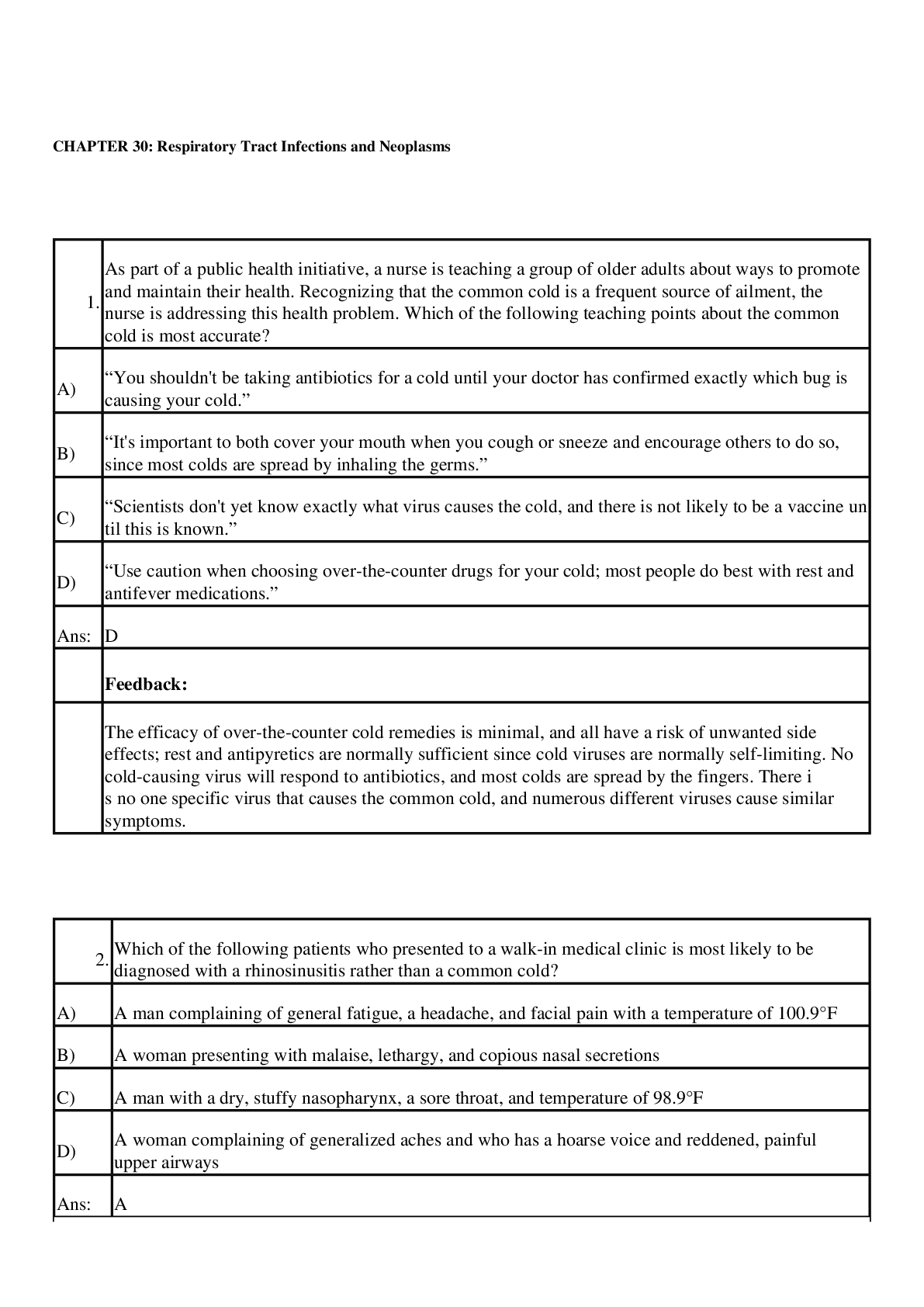
Buy this document to get the full access instantly
Instant Download Access after purchase
Add to cartInstant download
Also available in bundle (1)

TEST BANK FOR PORTH’S PATHOPHYSIOLOGY 10TH EDITION BY NORRIS ALL CHAPTERS
THIS PAPER CONSISTS OF ALL CHAPTERS
By GoldenA 3 years ago
$24
44
Reviews( 0 )
Document information
Connected school, study & course
About the document
Uploaded On
Mar 01, 2021
Number of pages
10
Written in
Additional information
This document has been written for:
Uploaded
Mar 01, 2021
Downloads
0
Views
69


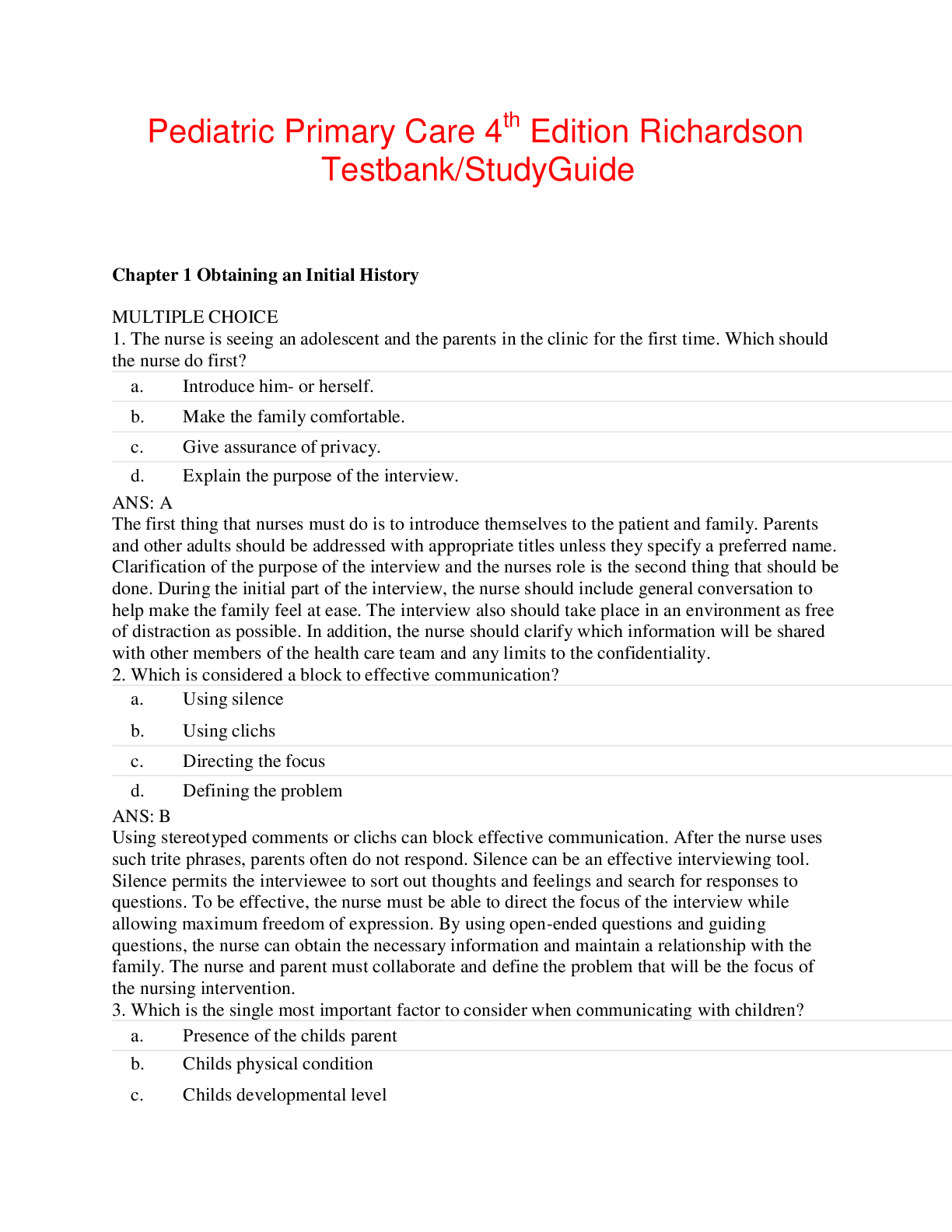

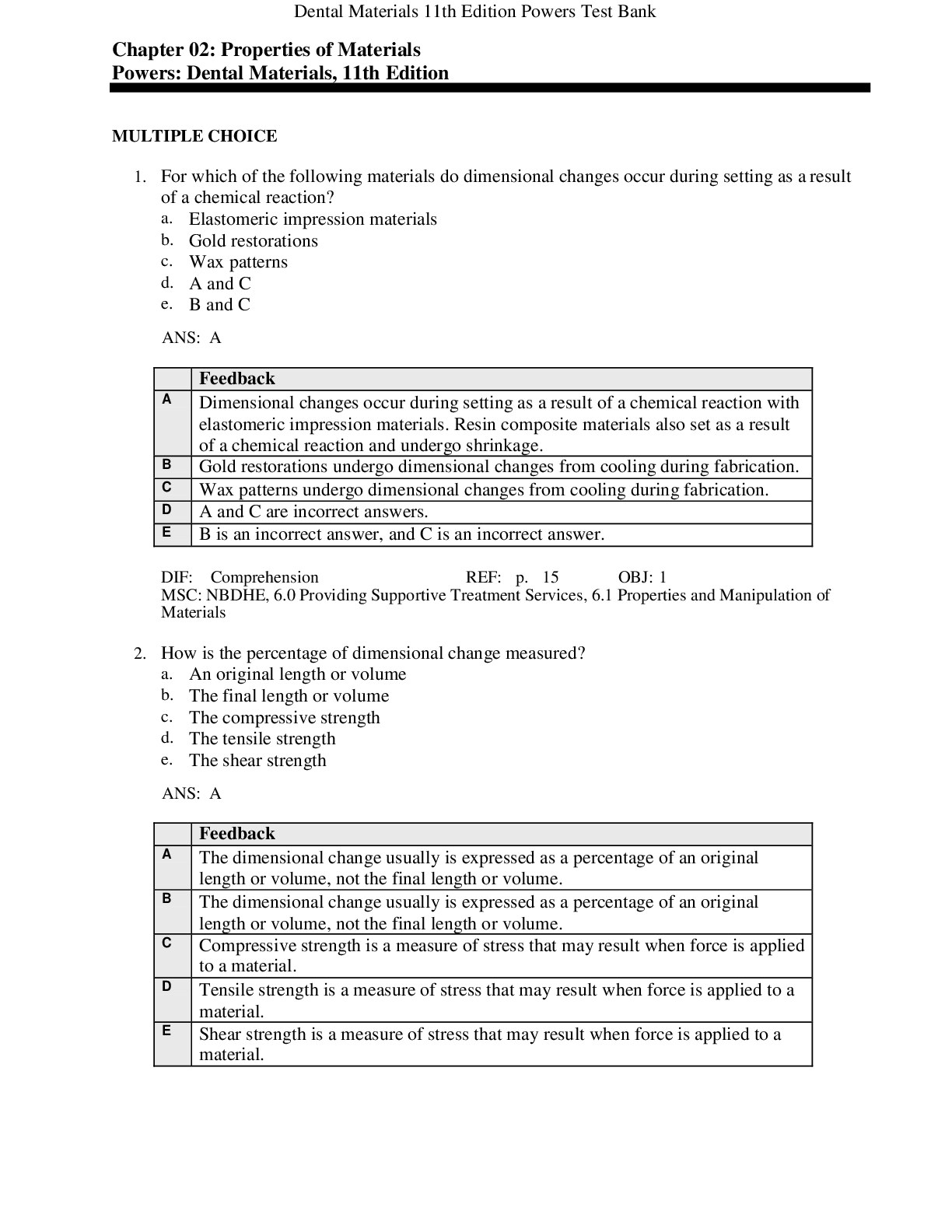
.png)
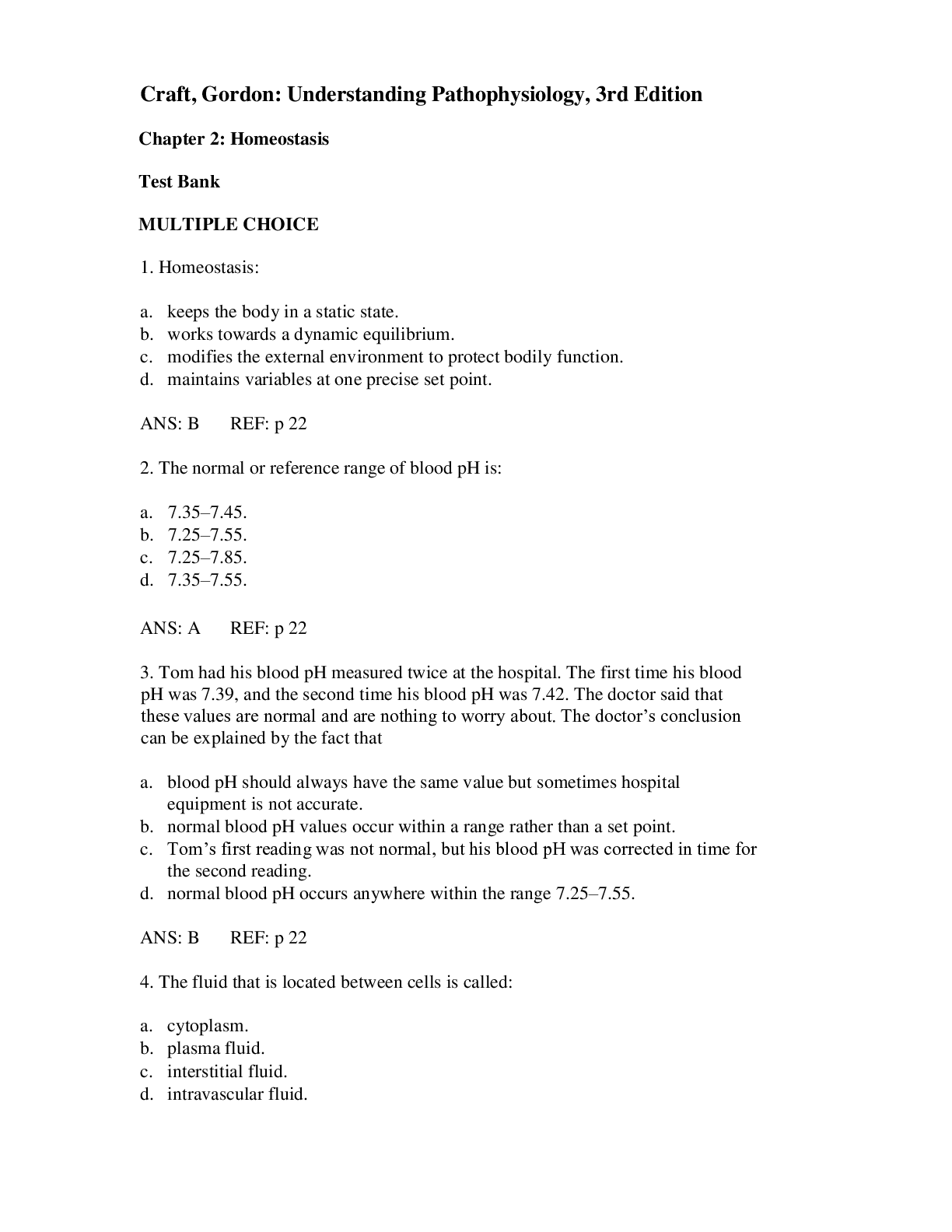



.png)
.png)
